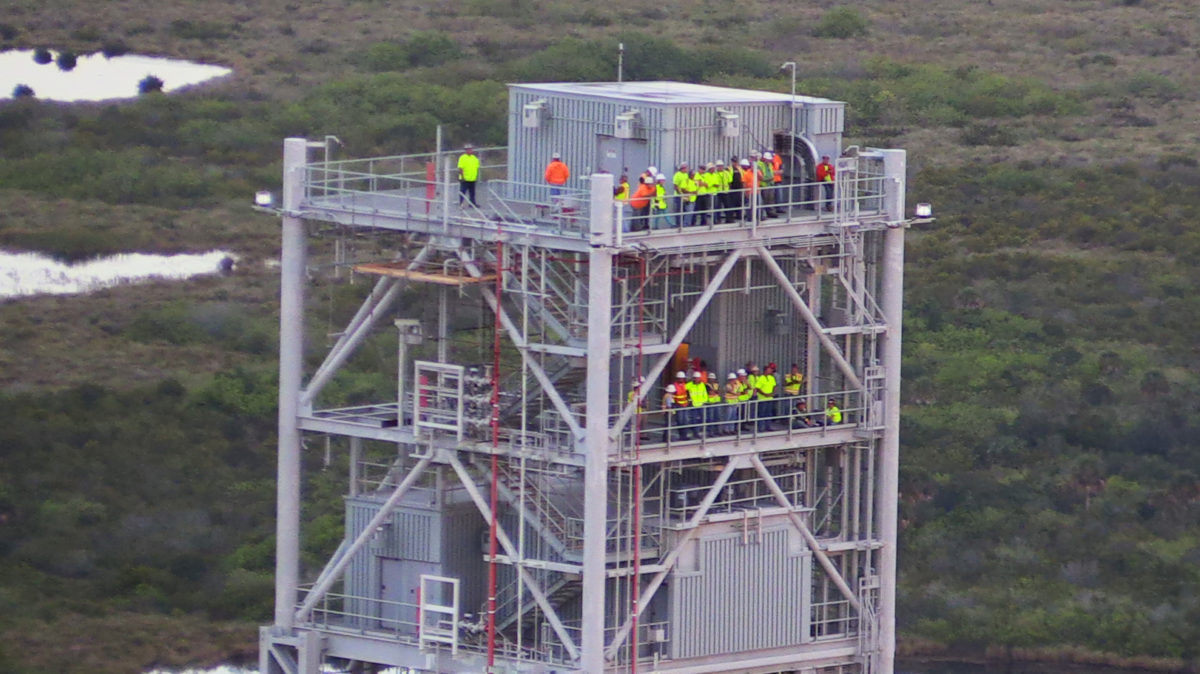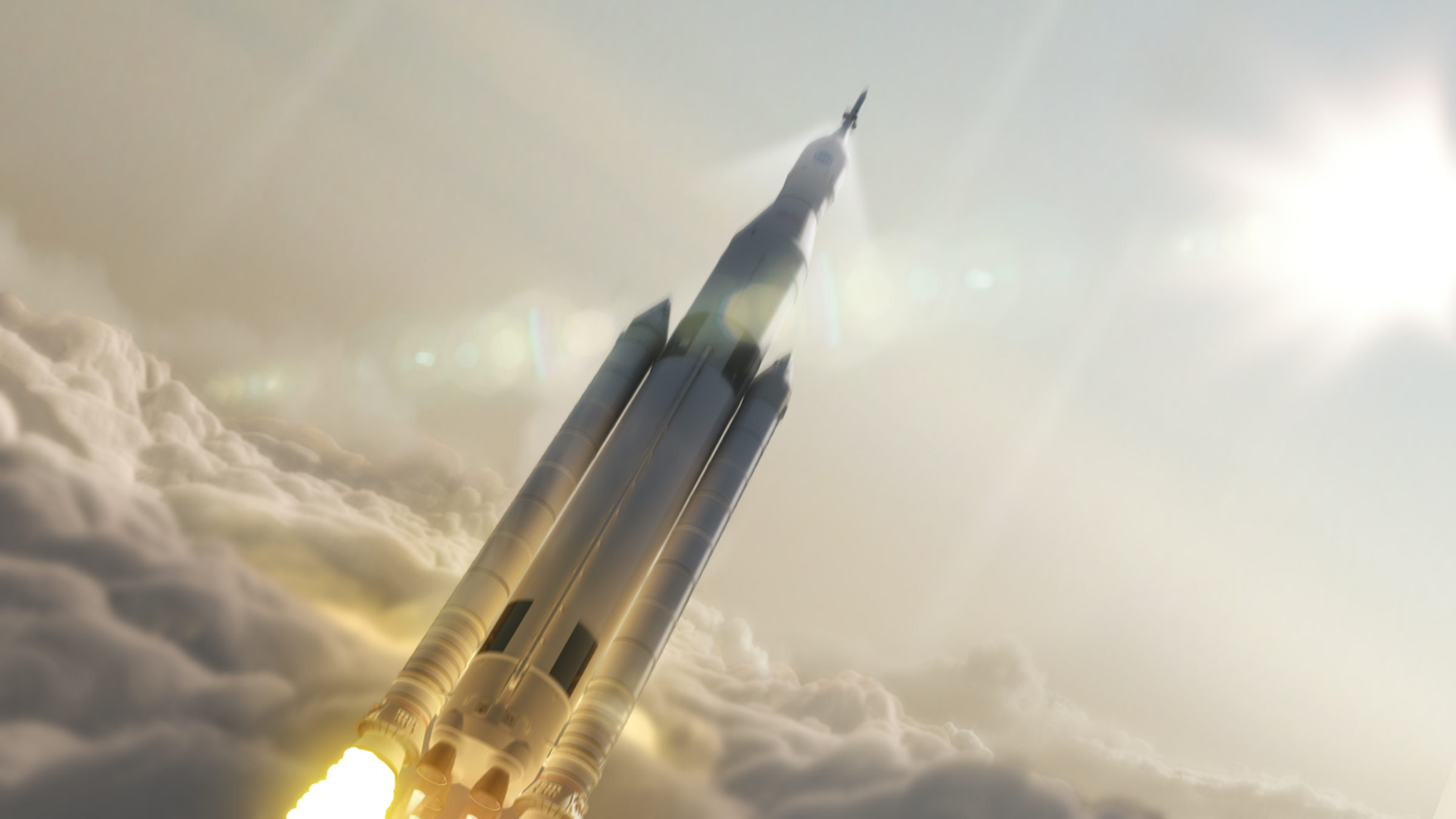Jason Davis • Mar 20, 2015
Report: NASA May Be Hard-Pressed to Launch SLS by November 2018
Last week in Utah, NASA celebrated the successful test-firing of a Space Launch System solid rocket booster. But the booster had hardly finished smoldering when the agency's oversight office threw a wet blanket on the big rocket's November 2018 launch deadline.
In a report released Wednesday, NASA’s Office of Inspector General warned that Ground Systems Development and Operations, or GSDO, may be hard-pressed to have Kennedy Space Center's launch facilities ready on time. Ground systems are a critical piece of the SLS-Orion infrastructure. All three elements are tightly integrated, with ground systems requiring significant input from the rocket and capsule designs.
"GSDO cannot finalize and complete its requirements without substantial input for the other two programs," said Jim Morrison, the assistant inspector general for audits. "And NASA is still finalizing the requirements for those programs."

Historically, said the OIG, NASA has taken a more centralized approach to the management of its in-house launch programs, synchronizing development activities through a single contractor. This is not the case for SLS, Orion and GSDO—each program is managed independently, with an emphasis placed on cross-program coordination. The OIG believes this approach is inefficient and could lead to scheduling delays.
"Since June 2012, NASA has identified 462 interdependencies between the GSDO, SLS, and Orion Programs," the report said. "To date, NASA has resolved 295 items (63.8 percent) with 167 remaining."
In a statement to The Planetary Society, NASA said the current approach is actually similar to the Apollo program:
"...the way we are managing the Exploration Systems Development portfolio comprising Ground Systems Development and Operations, Orion, and Space Launch System Programs is very similar to the approach used for Apollo. ESD represents the central management and integration function for the portfolio and, although we refer to it as a cross-program systems integration, it performs the same integration function that was performed among the Apollo-era programs in the 1960s. The primary difference is that, unlike in the Apollo era, ESD does not have a large integration contractor to do the work. Under the ESD approach, we leverage the normal cadre of the systems integration workforce that resides in each of the three programs in addition to a Headquarters-led workforce specifically focused on systems engineering and integration. We believe this is a more effective approach because each program has an investment and ownership of the systems integration effort; we are all in this together.
Program progress, as highlighted by the recent EFT-1 test flight and QM-1 motor test, confirms that this approach is working well through the initial design and development phase of our programs. We continue to evaluate the effectiveness of the approach and make adjustments when necessary."
The OIG report lists several hardware interdependencies that could delay ground systems development, ultimately pushing back a November 2018 launch. For example, work on the Orion Service Module Umbilical, or OSMU, could be delayed while GSDO waits on connector plates that attach cables and hoses to Orion.
There were also issues raised with integration and testing schedules. The Mobile Launcher must be moved into the Vehicle Assembly Building for testing prior to the delivery of SLS and Orion. When it comes time to stack the rocket and capsule for the first flight, there may be a "learning curve," said the report, where engineers work through unforseen glitches.
Another potential problem is the completion of software used to prepare, monitor and launch SLS. The software package, called Spaceport Command and Control System, or SCCS, must be tested and validated before SLS and Orion make their way to pad 39B. SCCS controls everything from pumps and motors at the launch pad to displays inside the Kennedy Space Center firing room.
"Historically, software development efforts have been a source of significant cost and schedule overruns, and the complexity and highly interdependent nature of the GSDO effort combine to make software development one of the greatest risks to on-time and on-budget performance of the Program," the report said.

As of December 2014, here are the completion rates for various ground systems hardware:
Launch Pad 39B: 25 percent complete.
Mobile Launcher: 43 percent complete. The exhaust opening has been widened from 45 square meters for Ares to 190 square meters for SLS, with steel reinforcement beams added to support the rocket’s weight.
Crawler-Transporter 2: 36 percent complete.
Vehicle Assembly Building: 14 percent complete. That sounds low, but the OIG said the VAB is generally on schedule to meet a September 2017 readiness date.
"They have made steady progress on the major equipment and facilities modernization initiatives," Morrison said, "including upgrading the Crawler-Transporter, which NASA used for many years to move the shuttle to the launch pad, and adapting the Mobile Launcher to accommodate the larger engines to be used on the SLS."
Orion, SLS and GSDO are each scheduled to complete a Critical Design Review, or CDR, this year. The report narrowed the CDR timelines to July for SLS, October for Orion and December for GSDO. Initially, a CDR for ground systems was scheduled for March, but the OIG recommended NASA delay the review until after SLS and Orion. The move should give GSDO more confidence that designs for SLS and Orion are stable.
William Gerstenmaier, the head of NASA’s Human Exploration and Operations Directorate, concurred with that recommendation, but warned that moving the ground systems CDR to December was no guarantee that SLS and Orion would finish first.
"There remains a risk," he wrote, "that one of the flight program CDRs could slip its planned date and follow the ground program CDR."

Despite its concerns, the OIG is not writing off a launch date of November 2018 just yet.
"It is too early to say whether these substantial coordination challenges will result in cost or schedule issues for the Exploration Mission 1 launch," the report said. "Moreover, new issues are likely to be uncovered during integration – the point at which most projects encounter technical problems that impact cost and schedule. Given these challenges, coordination efforts among the GSDO, SLS, and Orion Programs are essential to successfully meeting NASA’s human exploration goals."
Let’s Go Beyond The Horizon
Every success in space exploration is the result of the community of space enthusiasts, like you, who believe it is important. You can help usher in the next great era of space exploration with your gift today.
Donate Today

 Explore Worlds
Explore Worlds Find Life
Find Life Defend Earth
Defend Earth

